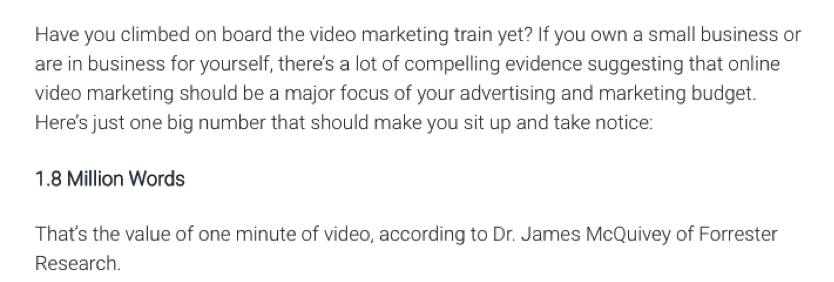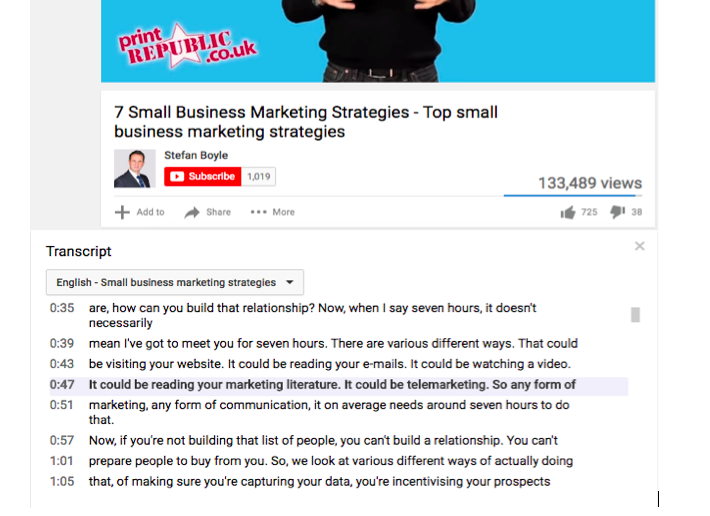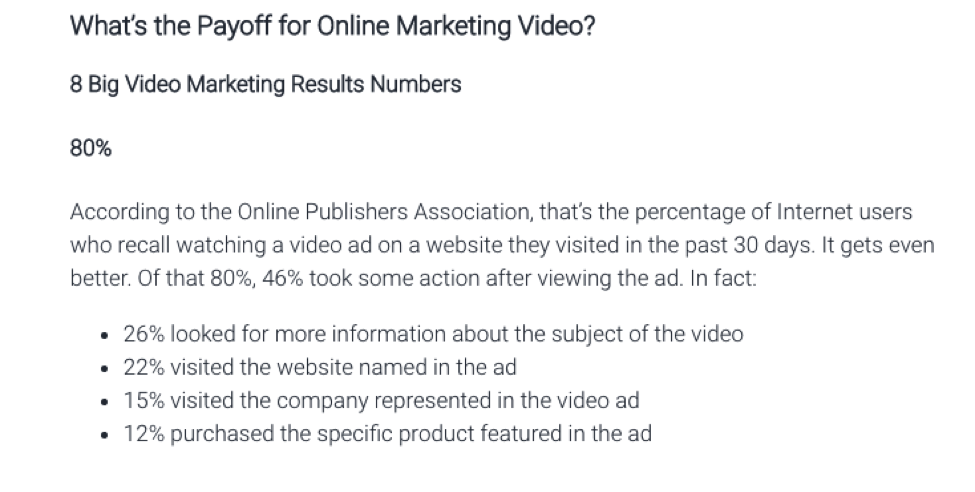Back to the Basics: 7 SEO Tips to Remember When Publishing Video on Your Website
Videos currently make up 64% of all internet traffic, and this number is said to increase to 80% by 2019. More and more businesses are taking advantage of this trend in video to incorporate it into their marketing and advertising, and their SEO is only improving. This is because video is one of the most effective ways of communication; it’s one thing to read a catchy headline, it’s another to read a caption that also contains music and animation. Which one are you most likely to remember?
Video isn’t only about creative photos and memorable script, however. There’s a lot that goes into marketing with video, and if you dive right in without doing your due diligence there’s a chance that it’s more likely to hurt your business than help it. That’s why I’ve compiled a list of 7 helpful tips to keep in mind before incorporating videos into your website:
-
Keep Titles Short and To-the-Point
Dealermarketing.com suggests using titles that are 70 characters or less, since anything longer than that will be truncated by search engines anyway. At Miami SEO, we actually recommended 60. The title should be chosen carefully; it’s a perfect opportunity to include keywords while also describing what your video is about. It’s an SEO best practice to not use a title that tricks your viewers into watching a video by portraying it as something it is not. This will sever trust with your audience and it will be difficult to gain it back. Instead, make sure your title is short but still interesting and relevant to your content, like a headline would be for text.
-
Make Sure Videos Provide Value for Consumers
In addition to a relevant title, your viewers will thank you for making sure your video provides them with high quality information. There’s no point in going to a ton of work to direct users to your video only to have them be turned off by its poor quality or content. The video’s sound should be good, the visuals clear, and the content worthwhile. Don’t forget that the content you publish is a direct reflection of your brand.
Furthermore, videos should be easy to find and navigate. You can have the best content in the world, but if viewers can’t find the videos to watch them, it won’t help your SEO. One way to guarantee success is to include categories and tags; this makes it easy to search through videos if there are a lot.
- Transcriptions and Closed Captions
Viewers can use transcriptions and closed captions to “read” video if they can’t listen for whatever reason. This is also an excellent way to include the keywords necessary for SEO. Transcriptions or captions and keywords can increase your video’s find-ability and essentially get it ranked by search engines.
You can add video transcriptions directly to the HTML of each page where your video is being hosted, or use YouTube captions. If you choose the latter, just make sure you review the captions and make any necessary changes.
-
Host Videos on YouTube but Also on Your Own Site or on a Third Party Platform
It’s worth hosting your video on YouTube because YouTube is owned by Google and is the second largest search engine when it comes to queries. YouTube is easy to use, and better yet, free. This will do wonders for your SEO. This is especially good for small businesses that need the exposure and name recognition of a big-name site like Google.
If you only choose to host your video(s) on YouTube, however, you may be missing out on a boost to your SEO. When viewers go to search for your video, the link to your video on YouTube will most likely come up, not the link to your actual website. This might be ok for a small business, but it’s not ideal for SEO. If you can host the video on your own website without bogging down the site and making your video run really slowly (see number 5), that’s the best option to increase your rankings. One way to do this is to make sure each video has it’s own page. Also, include on the pages text and images that support the video. This is another way to include keywords to boost your rankings.
-
Optimize Your Video
People have short attention spans and don’t want to wait forever for your video to load. They tend to give up after about 2 seconds. If that wasn’t reason enough to make sure your videos load quickly, it’s also important to know that Google considers page performance in its algorithm. The plus side is, if you can hold your viewer’s attention span long (or short) enough for the video to play, you can have them hooked for anywhere from 2-5 minutes—a lifetime in the world of video marketing.
-
The Technical Stuff: Metadata and Sitemaps
If you self-host your video (see number 4) it’s a good idea to include a sitemap. This is a map that lists all the videos on your website, including the URLs, titles, and keywords. This makes it easier for search engines to find your video and direct others to your site as opposed to YouTube or Vimeo. Your videos and transcript pages should be separate in your sitemap so that they can be indexed correctly. If you’re not sure how to create a sitemap, this is a really helpful article.
In addition to sitemaps, metadata can be used to help boost rankings as well. Video titles and descriptions, as well as tags, are all important factors that affect SEO. You should try to insert as many relevant keywords as possible into all 3 of these components.
-
Advertise on Social Media
The more people that view, like, comment, and share your video, the better. This sends signals to search engines that your video contains high quality content, and thus boosts your ranking. The goal should be to keep your audience as engaged as possible. Your SEO will thank you for it. Also, if others share your video and want to embed the link into their own websites, you should definitely allow it. This provides more links and references back to your own website, and thus increases your SEO.
Now that you’re familiar with the in’s and out’s of including videos on your site, how are you going to begin? Do you know any tips not listed in this article? Comment in the section below!
All screenshots taken by author on August 25, 2016 from YouTube, Google, and VideoBrewery.com



